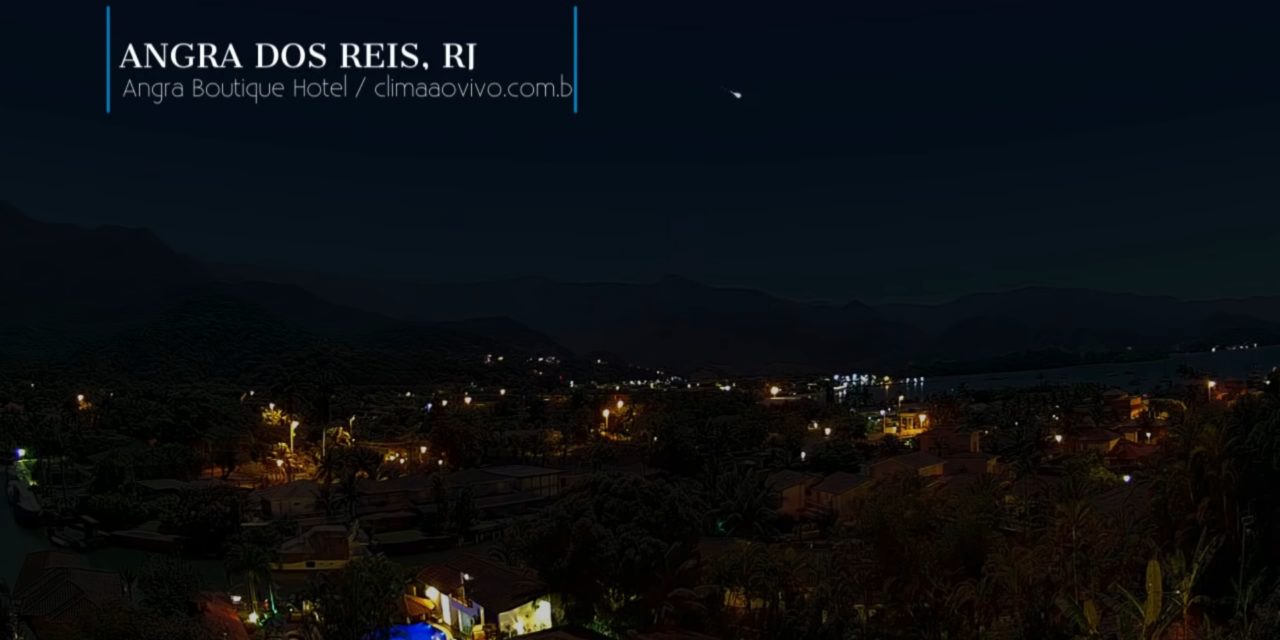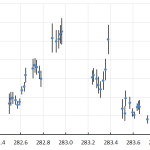23 captures of a slow moving bright fireball over Brazil – Amazing citizen participation and science! Go BRamon, Go Clima Ao Vivo!
Original article by Marcelo Zurita in Portuguese :
Google translation to English with some edits
A bright fireball was recorded by 23 cameras of the BRAMON ( Brazilian Meteorological Observation Network , and Clima ao Vivo networks in São Paulo, Rio de Janeiro, Minas Gerais and Espírito Santo.
The meteor was initially caught on one of the monitoring cameras at the IDS / MG station in Patos de Minas, managed by Ivan Soares. He drew attention to it’s apparent slow velocity, which meant that some BRAMON cameras could not record the event. This is because BRAMON stations are configured to only record videos of objects that may be meteors and speed is a cutting criterion to avoid recording planes, satellites and other objects that are slower than most meteors. The MAV2 / MG station managed by Marco Antônio Vieira, also in Patos de Minas, managed to record a larger section of the meteor until it disappeared behind a tree.
In São Paulo, the SMZ13 / SP station, managed by the current president of BRAMON, Sérgio Mazzi, recorded the meteor almost vertically, appearing high in the sky and falling at the same time that it lost speed until the point where the system stopped capturing due to the slow velocity of the object. Similarly, this occurred at the CPJ1 / SP station in São José dos Campos, managed by Diego Rhamon.
In Osasco, in Greater São Paulo, the FGL1 / SP station, managed by Denis Araújo, had a less restrictive configuration and managed to register the meteor’s flight for more than 12 seconds. In Duque de Caxias, Rio de Janeiro, the ASS1 / RJ station managed by Anderson Silva made a spectacular record of the fireball. With a camera having a narrower field of view, the capture is in entirety with the final stretch of the meteor until extinction.
Apart from these, another 17 cameras from Clima ao Vivo recorded the fireball streaking the sky in the 4 states of the Southeast.

A video grab from Brazópolis, Minas Gerais – Credit: Pico dos Dias Observatory
FIREBALL AND OTHER TERMS
When a piece of space rock (meteoroid) reaches the Earth’s atmosphere, due to its high speed, it causes the heating and ionization of atmospheric gases, generating the luminous phenomenon called a meteor . When a meteor is brighter than the planet Venus, we can also call it a fireball . Fireballs that end in an explosive manner are also called bolides .
Most of the time, the space rock is completely vaporized as it passes through the atmosphere, due to a phenomenon called atmospheric ablation . Depending on certain conditions, larger meteoroids can survive the atmospheric passage and reach the ground. In such cases, these recovered fragments are called meteorites .
TRAJECTORY
By triangulation of the captures, BRAMON calculated the trajectory of the meteor through the atmosphere. The space rock entered our planet’s atmosphere at 03:46 (06:46 UT) in the morning of Monday, March 22. It appeared in the sky at an altitude of 79 km over the city of Guaratinguetá in São Paulo and traveled in a northeastern direction at a speed of 54.3 thousand km / h (15.1 km / s), at an angle of just 12 ° in relation to the ground. . It traveled the distance of 187 km in 12.4 seconds, until disappearing at 40.2 km in altitude over the rural area of Ibertioga, in Minas Gerais.

Meteor Trajectory – Credit: BRAMON
When a meteoroid reaches the atmosphere at a very low angle, it takes longer to descend to the lower, dense atmospheric layers. Therefore, it’s passage lasts longer and travels a huge distance, allowing several cameras, from different locations to register it.
In the case of this meteor, the fact that it is recorded in at least 23 cameras in four states of the Southeast region, seems to be unprecedented in Brazil.





